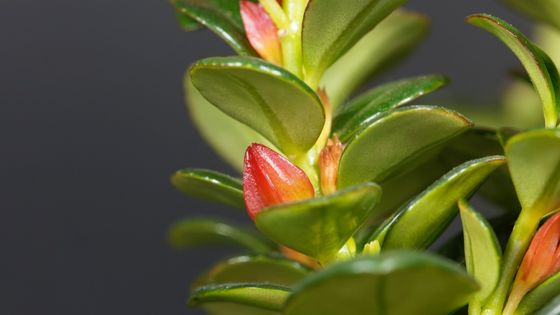Goldfish Plant
It The Goldfish Plant, also known as Columnea gloriosa or Columnea crassifolia, is a beautiful, slow-growing tropical plant that is native to the forests of Central and South America. It is a popular houseplant due to its unique appearance and ease of care, making it an attractive addition to any indoor garden.


Appearance:
The Goldfish Plant is a trailing or climbing plant that can reach up to 2 feet in length. Its leaves are dark green, oval-shaped and grow to about 1 inch long and 1/2 inch wide. The plant produces small, tubular flowers that are typically yellow or orange in color, hence the name “Goldfish Plant”. These flowers are arranged in clusters and can be up to 2 inches long. They are also highly fragrant, making the plant a great addition to a room for its fresh, sweet scent.
Origin:
The Goldfish Plant is native to the warm, humid forests of Central and South America and is commonly found in the rainforests of Colombia, Ecuador, and Peru. In its natural habitat, the plant grows as an epiphyte, meaning it grows on other plants or trees without drawing any sustenance from them.
Common Names:
In addition to its scientific name, Columnea gloriosa, the Goldfish Plant is also known by several common names including: the Flying Goldfish Plant, the Columnea Plant, and the Orange Blossom Plant.
Varieties
There are several varieties of the goldfish plant, including:
- Columnea gloriosa – the most common variety, known for its bright, orange-yellow flowers
- Columnea hybrids – a hybrid of Columnea species, with various colors of flowers and leaf shapes
- Columnea crassifolia – a smaller variety with small, dense leaves and bright red flowers
- Columnea banksii – a trailing variety with long, narrow leaves and yellow flowers
- Columnea microphylla- a miniature variety with small, delicate leaves and orange flowers
These are some of the most commonly cultivated varieties of the goldfish plant, and all make great additions to a houseplant collection.
Cultivation:
The Goldfish Plant is a relatively easy plant to care for and can be grown in a wide range of conditions, making it an ideal choice for those new to indoor gardening. It does best in bright, indirect sunlight and prefers a temperature range of 60-80°F. The plant should be kept away from direct sunlight, which can cause the leaves to burn. The plant requires well-draining soil and should be watered when the top inch of soil is dry. It is also important to keep the humidity level high, as the Goldfish Plant is native to a humid environment. This can be achieved by misting the leaves regularly or by placing a humidifier nearby.
Propagation:
The Goldfish Plant can be propagated easily by taking stem cuttings and rooting them in water or by division. To propagate by stem cuttings, simply take a 3-4 inch cutting from the mother plant and place it in water. The cutting will root in 2-3 weeks, after which it can be planted in soil. To propagate by division, simply separate the root system of the plant into two or more sections and plant each section in its own pot.
Diseases and Pests:
The Goldfish Plant is relatively hardy and does not have many problems with diseases or pests. However, it can be susceptible to scale insects and spider mites, which can be controlled by using a neem oil solution or by using a commercially available pesticide.
Decorating with the Goldfish Plant:
The Goldfish Plant is a beautiful and versatile plant that can be used in many different ways to decorate a room. It can be used as a hanging plant, in terrariums, or in water gardens. It is also a great plant for container gardening, as it can be trained to climb up a trellis or placed in a hanging basket. The plant’s bright orange flowers and trailing habit make it a great addition to any room and can be used to create a warm and inviting atmosphere.
The Symbolism of the Goldfish Plant:
The symbolism of the goldfish plant varies, but some possible interpretations include:
- Good Fortune: Due to its bright, eye-catching flowers, the goldfish plant is sometimes seen as a symbol of good luck and prosperity.
- Joy and Happiness: The cheerful appearance of the goldfish plant, with its bright flowers and lush green leaves, is associated with feelings of joy and happiness.
- Indoor Gardening: As a popular houseplant, the goldfish plant is also sometimes seen as a symbol of indoor gardening and the art of nurturing plants indoors.
- Air Purification: The ability of the goldfish plant to purify the air, removing toxins and improving air quality, is sometimes seen as a symbol of environmental responsibility and health.
These are just a few of the many symbolic meanings associated with the goldfish plant, and the significance can vary depending on the individual interpretation.
Conclusion:
In conclusion, the goldfish plant (Columnea gloriosa) is a desirable houseplant for its attractive, goldfish-shaped flowers and low maintenance requirements. It thrives in bright, indirect light, moist soil, and regular watering. Propagation is easily done through stem cuttings, making it an accessible plant for those new to gardening or plant care.
















